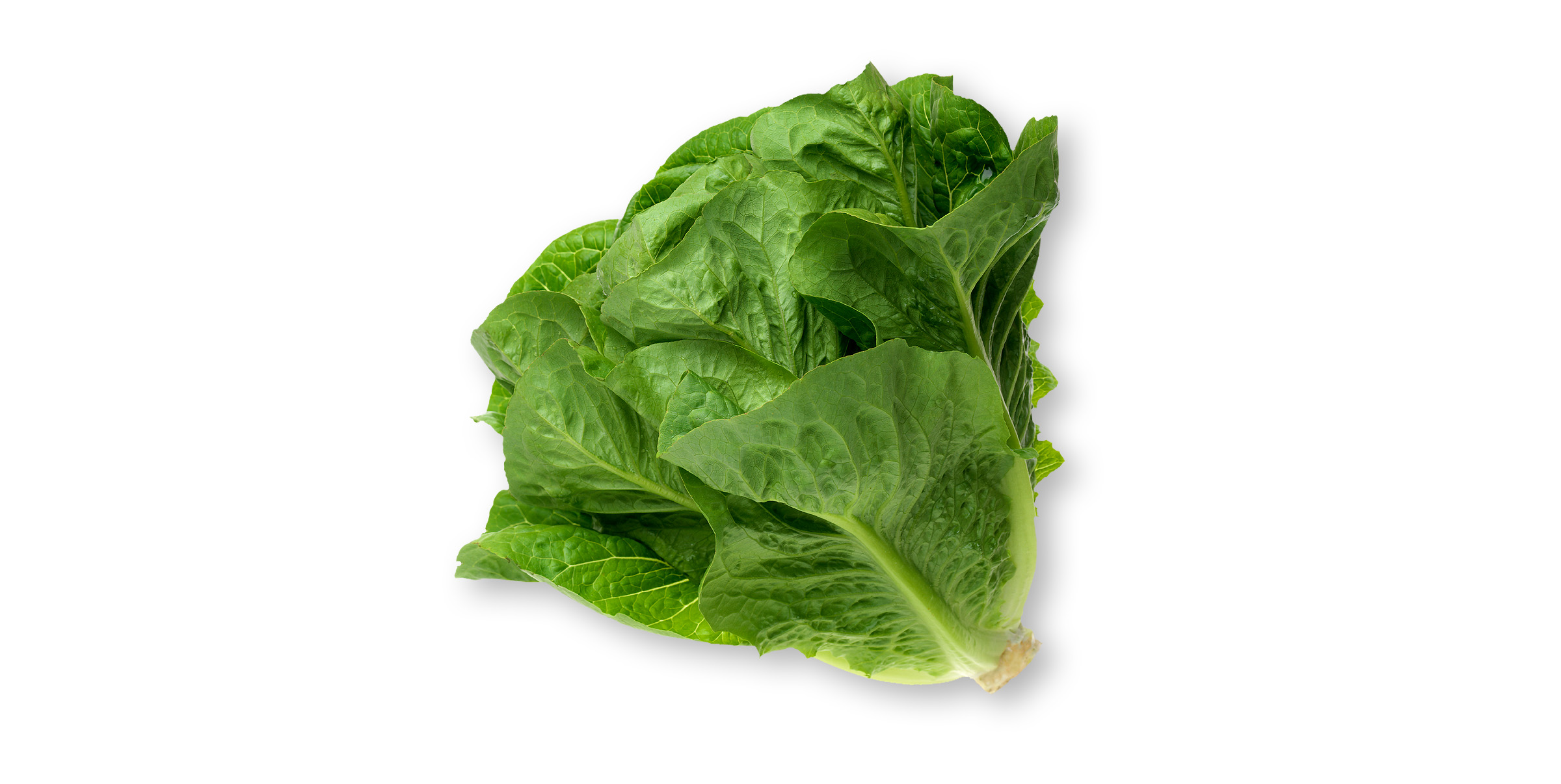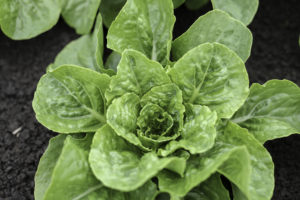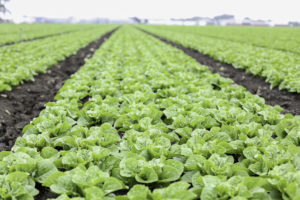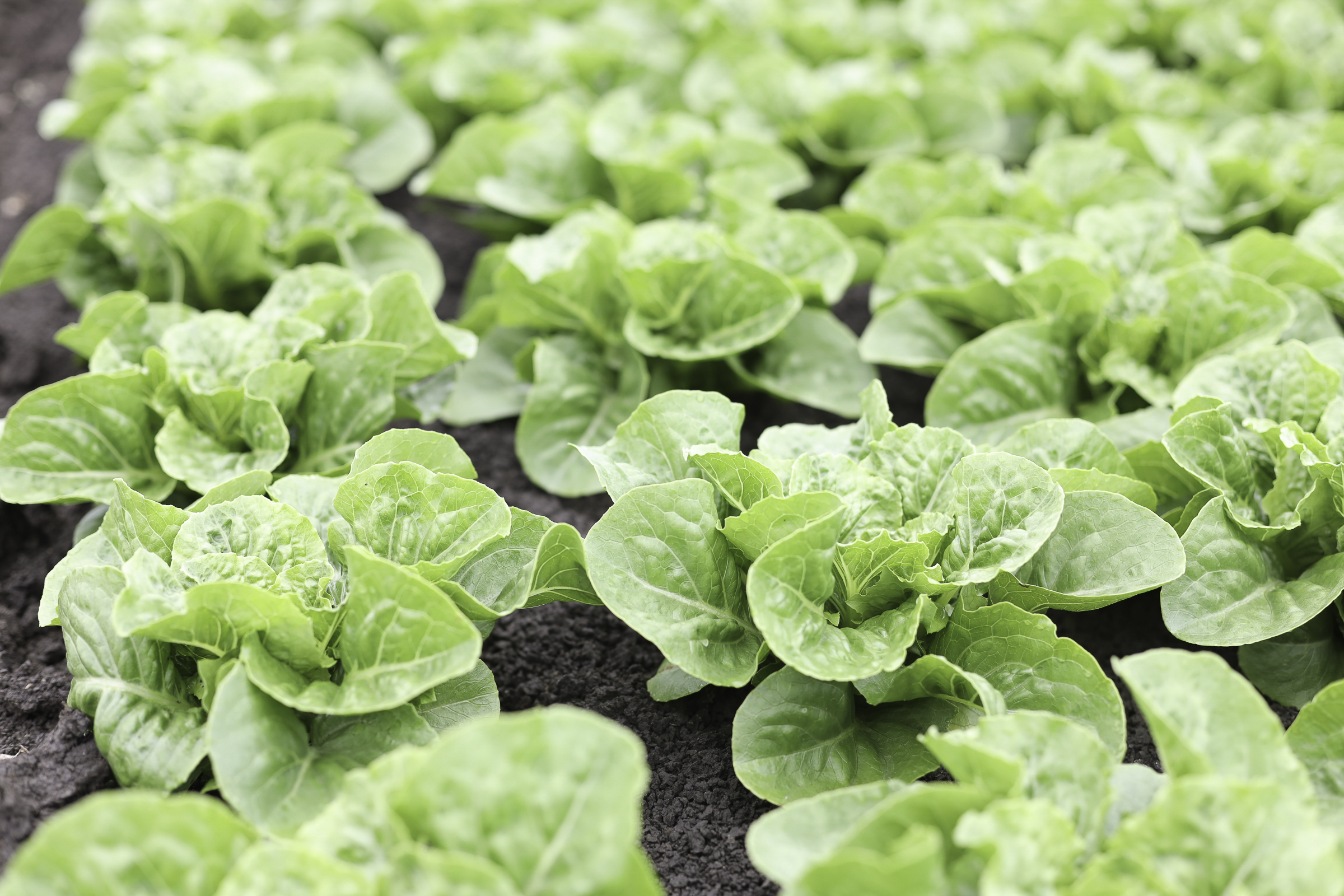Romaine Benefits and Nutrition Facts

Why is Romaine lettuce bad for you?
Romaine lettuce is NOT bad for you! In fact, it’s really good for you!
Only 1 out of 10 Americans eat the recommended amount of fruits and vegetables per day. One easy and tasty way to get your daily dose of fruits and veggies in is to eat a salad. This is because salads typically contain a variety of good-for-you ingredients. And romaine makes a great base for these salads!
How many calories are in romaine lettuce? The answer is very few. And romaine lettuce is extremely versatile with a crispy mild, sweet flavor. In terms of volume consumed in the U.S. it is number two, second only to iceberg.
Keep reading to learn more about romaine nutrition and why it is good for you.
Is Romaine good for you?
Is romaine lettuce healthy? Romaine lettuce isn’t just good for you, it’s great for you! It is a common misconception that romaine (as well as other types of lettuce) is not very nutritious because of it’s high water content. However there are many health benefits of romaine lettuce. Romaine boasts a wide variety of vitamins, minerals, antioxidants and fibers making it a nutritional powerhouse. Let’s get into the specifics of romaine lettuce nutrition.
Romaine lettuce is an excellent source of vitamin A, providing 25 percent of the U.S. daily recommended allowance in a one cup serving. Vitamin A is found in plant foods, like romaine lettuce, as beta carotene and is converted into active vitamin A in the body. Vitamin A can help decrease the risk of developing heart disease and certain types of cancer. It’s also important for eye health to prevent night blindness and lowers the risk of developing cataracts and age-related macular degeneration, which is the leading cause of blindness in the U.S.

Romaine is also an excellent source of vitamin K, providing 40 percent of the daily recommended allowance per one cup serving. The vitamin K in romaine lettuce is involved in producing proteins that are part of bones and tissues and it makes proteins needed for proper blood clotting. Vitamin K also improves calcium absorption and can even help reduce the amount of calcium that leaves the body as waste.
Romaine lettuce is also a good source of Folate. Folate is a B vitamin that is important both before and during pregnancy. The folate in romaine can lower the risk of birth defects in the baby’s brain and spine. It’s also necessary for producing red blood cells and preventing anemia. Folate may also play a role in the prevention of several types of cancer.
Lutein and zeaxanthin are also in romaine lettuce. These carotenoids work together to reduce the risk of macular degeneration and other age-related eye diseases that can lead to blindness. Lutein also plays a role in brain health and function throughout life and may reduce the risk of developing cancer and heart disease.
A one cup serving has just 10 calories in romaine lettuce. There are also only two grams of carbs in romaine lettuce per one cup serving. Because romaine lettuce calories are low and it is high in nutrients, romaine is an excellent choice for those trying to lose or maintain weight.
Can pets eat romaine lettuce?
If romaine is so good for us, is it good for our pets too? Can dogs eat romaine lettuce? Can guinea pigs eat romaine lettuce? Yes! Just like it does for us, romaine lettuce provides pets with all the same nutritional benefits.
For guinea pigs romaine is extremely beneficial to their health. It can aid in weight control, digestion, immune strength and eliminating free radicals.
Romaine can also be good for your dog, but you should be more cautious with the amount you give them. Because romaine and other leafy greens are very fibrous they can be hard for dogs to digest. It is recommended that if you do give your dog lettuce, you chop it first to help them more easily digest it.
Also, just because dogs can eat romaine and other types of lettuce, it doesn’t mean you should give them your leftover salad. This is because the salad could contain other ingredients, such as onions, that may not be good for your dog.
What is Romaine lettuce?
To further understand romaine, we should begin with learning about the romaine plant and how it’s grown.
Lettuces, including romaine, are a part of the daisy family of plants. It is believed that the romaine lettuce plant originated in the mediterranean region. Romaine is characterized as being crisp and slightly sweet with long, narrow leaves that have ridges on them. At the store you can find both green and red romaine lettuce varieties. The most common way romaine is packaged at the store is as romaine “hearts” with typically three per bag. A large amount of romaine lettuce also gets packaged into pre-made salads.
There are over 72,000 acres of romaine lettuce planted in California each year and 1.1 million tons are harvested annually. Romaine is the second most produced type of lettuce in the U.S. behind iceberg. Together, California and Arizona produce 90 percent of the domestically grown leafy greens in the U.S. That means that the romaine you eat is likely from one of these states.
Is romaine safe to eat right now?
It is perfectly safe to eat romaine lettuce right now.
Farmers in California and Arizona grow millions of servings of romaine lettuce every day under a stringent food safety program to ensure romaine and other lettuce is safe to eat. On the very rare occasion when romaine lettuce has been involved in a foodborne illness outbreak, government agencies like the U.S. Food and Drug Administration (FDA) and the Centers for Disease Control (CDC) quickly notify consumers and provide information on what lettuce is safe to eat. According to the CDC romaine lettuce is not suspected in an outbreak at this time and is perfectly safe to eat.
You may notice from time to time you hear of a romaine lettuce recall. A romaine recall occurs when there is concern or knowledge that the product is violative (meaning it is believed to be adulterated or contaminated). It is important to know that the majority of produce recalls are unrelated to food safety issues. Most have to do with mislabeling or specific company quality standards. However, in some cases recalls are in response to a foodborne illness outbreak.

In the unfortunate event of an outbreak, individual companies and public health agencies work together to identify the specific food, brand, lot number, or date of production in order to remove that product from the market. When outbreaks do occur involving romaine lettuce, the vast majority of the product is perfectly safe to eat. However, if a source cannot be narrowed down to a specific company, lot number, or date of production, all of the product will be pulled from the market out of an abundance of caution. This is exactly why with romaine lettuce CDC has on occasion had to issue what they call a consumer advisory warning people not to consume any romaine for a period of time.
No one works harder to prevent foodborne illness outbreaks in romaine than the farmers who grow it. That is why in 2007 California lettuce farmers created the California Leafy Green Products Handler Marketing Agreement (LGMA), a program that strives to assure safe leafy greens. Under the LGMA food safety program lettuce farms are visited regularly by government auditors who verify that farmers are following over 300 different food safety checkpoints. These food safety practices that farmers must follow are continually updated as more information about how to safely grow lettuce becomes available.
To receive food safety alerts and updates about lettuce health and safety, please sign up to receive our Lettuce Info newsletter here.
Which is better, spinach or romaine lettuce?
Both spinach and romaine are very good for overall health and provide a variety of vitamins and minerals that our bodies need every day. Which one is better for health really depends on your own personal dietary needs.
Romaine lettuce and spinach are both excellent sources of vitamin K. Romaine is also an excellent source of vitamin A, but overall spinach provides higher amounts of iron, potassium, vitamin C, Vitamin K, magnesium and zinc per serving. Romaine contains more Vitamin A than spinach but far less Vitamin K, even though they are both considered excellent sources of vitamin K. Romaine lettuce and spinach contain the same amount of calcium and folate.
The most important thing to remember is that we should all be eating more leafy greens so we recommend enjoying whichever one you find the most tasty on a regular basis!

